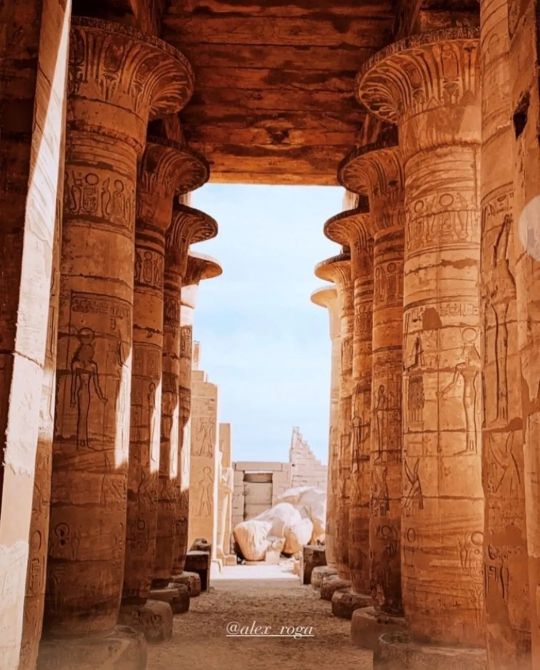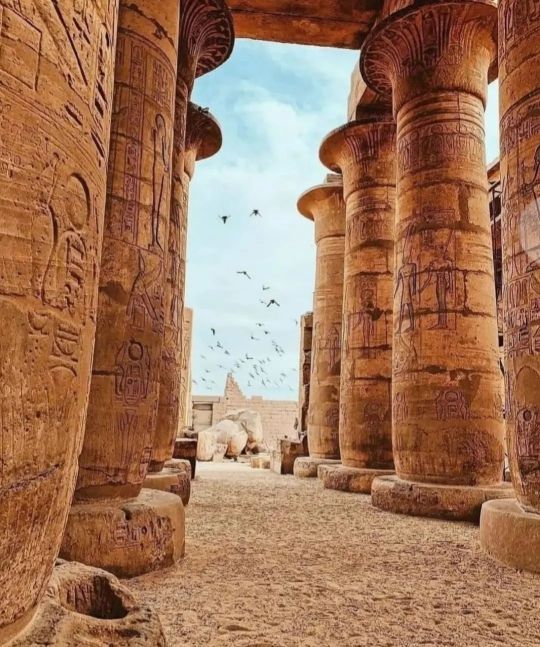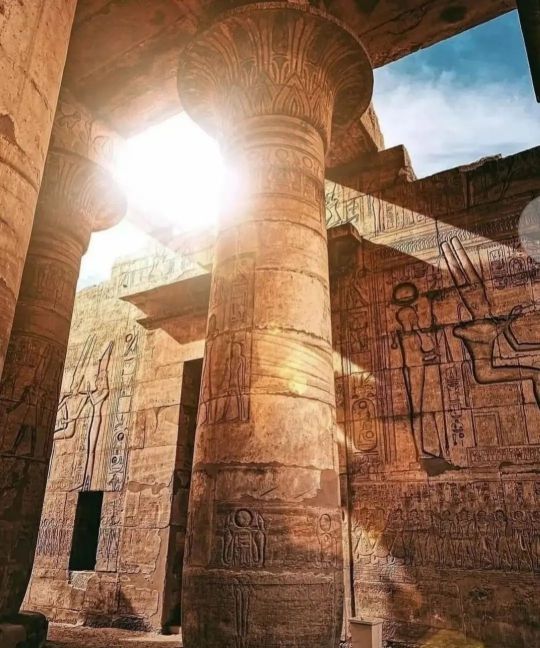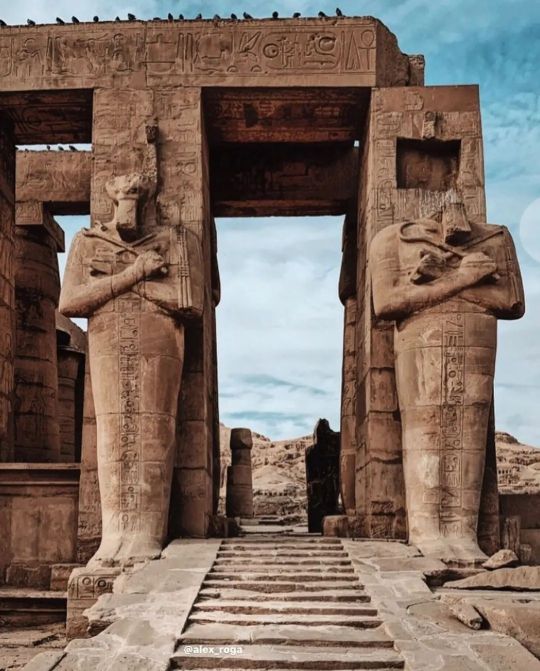#prenomen
Explore tagged Tumblr posts
Text

A pectoral belonging to Tutankhamun, representing his prenomen, also called cartouche name or throne name.
Winged scarab of Tutankhamun with semi-precious stones. This pectoral is composed of Tut's Prenomen name: "NebKheperU-Ra", the hieroglyphs of: Basket, Scarab-(in Plural-strokes), and Re. (The "James, 2000, Picture Book, Tutankhamun, describes this pectoral in the section of 'Necklaces and Pectorals', as: "Pectoral with Royal Prenomen and Lotus Fringe", p. 234.) (Two other hieroglyphs are on the pectoral, the Eyes of Ra and Horus, and the Ankh.)
#wikipedia#lapis lazuli#lapis#coral#enamel#pectoral#tutankhamun#prenomen#cartouche name#throne name#semi precious stones
3 notes
·
View notes
Text
can someone tell me what Tolkien had against the letter j
#I don’t think it’s ever used in his languages? Haven’t come across a quenyan or sindarin word that uses j#In other news completely sympathise with his affinity for iambic tetrametric rhyming couplets they are also my go to#(Discovered an old file of mine that descended from prose to the aforementioned; no idea what it was about but still)#Anyway I genuinely don’t think the letter j is that bad?#Maybe he really didn’t like his prenomen#Anyway I am clearly thinking of important things#Tolkien#jrr tolkien#hatred of the letter j#Is there a phobia for that#Jotaphobia#Such a hated letter it doesn’t have a Greek root because there is no Greek equivalent#This whole consonant that Greeks deleted and replaced with another ‘i’#God get back to the tags Alexis really abusing this function right now#Genuinely I hope you appreciate my tags I put a lot of effort into them /j#Wouldn’t be able to tag that without the letter j#Guys help I’m going nowhere good
4 notes
·
View notes
Text

Head of a statue of Emperor Nero from Corinth. Nero was born on the 15th of December, 37 AD in Antium. His birth name was Lucius Domitius Ahenobarbus and he only acquired the prenomen Nero after his adoption by Claudius in 50 AD.
#happy birthday#nero#emperor nero#julio claudian dynasty#ancient rome#roman empire#ancient history#ancient art#ancient culture#ancient civilisations#statue#marble statue
103 notes
·
View notes
Text

An Egyptian Faience Scarab, New Kingdom, 18TH dynasty, reign of Hatshepsut, 1473-1458 B.C.
Green in color, the well-detailed beetle with the underside containing her royal prenomen flanked by cobras, each head surmounted by a solar disk, a winged sun-disk with pendant cobras above
½ in. (1.3 cm.) long; ring size 4 ½ x
#ancient jewelry#ancient art#antique jewelry#antique art#artifact#ring#scarab#egypt#ancient egypt#egyptology#uploads#Hatshepsut
83 notes
·
View notes
Text
Refs ! And some info for the general lines of the ask blog!

Sumer! (5500 BCE- 1800 BCE, oldest) currenlty in the Uruk Period! (in 3300 BCE) (Cool Video) Decided to give them the Lamassu as a "animal", because it was a protective figure for royalty!
"Initially depicted as a goddess in Sumerian times, when it was called Lamma, it was later depicted from Assyrian times as a hybrid of a human, bird, and either a bull or lion—specifically having a human head, the body of a bull or a lion, and bird wings, under the name Lamassu"(x)

Upper Egypt (3400 BCE- 3100 BCE) ( and Lower Egypt! (3500 BCE-3100 BCE) (Cool Video) They unify in 3100 BCE!
"Snakes are shown in Papyrus, walls of tombs and ancient artifacts because they are not only a symbol of protection and were respected by ancient Egyptians but also a sign of the union of two kingdoms"(x)
"In ancient Egypt, Upper Egypt was known as tꜣ šmꜣw, literally "the Land of Reeds" or "the Sedgeland", named for the sedges that grow there." (x) "Standard titles of the pharaoh included the prenomen, quite literally "Of the Sedge and Bee" (nswt-bjtj, the symbols of Upper and Lower Egypt) and "lord of the Two Lands" " (x)

Indus Valley Civilization! (The pacifict) (Cool Video) Gave them a cow as an animal seen the religion connection to them in modern times.
"Cattle. They were the main domestic animals of the Indus Valley Civilisation, and their bones constitute half of those found in the uncovered Indus sites. Cows were mainly domesticated for their milk, and bullocks were kept for drawing carts, threshing, and raising water; simultaneously, bulls were kept for breeding."

Caral-Supe Civilization! (3500 BCE- 1800 BCE) (Cool Video)
I didn't find anything about the language spoken by them , if anyone knows I'll alter it but for now I gave the generic color of the South Americas Eyes!
Gave them a Vicuña Vicugna as an animal , since it's the currend national animal of Peru , and they are fluffy and I like to draw them a lot...
Xia Dynasty China is not yet present! (They come around 2070 BCE)

Also a timeline of the domestication of animals!

The Ask Blog will be set in 3300 BCE to start , since that is the start of the Bronze Age!
(Reminder : If I do any errors please say so! I am here to learn too and confrontation of ideas is fun!) Thank you and have a nice day or night!! (∩`-´)⊃━☆゚.*・。゚ *May alter this post as it goes! or make an other!
#countryhumans bronze age#countryhumans cradle of civilization#countryhumans sumerian civilization#countryhumans sumer#countryhumans upper egypt#countryhumans lower egypt#countryhumans indus valley civilization#countryhumans caral-super civilization#countryhumans ask the bronze age
36 notes
·
View notes
Text




Egyptian lion statuette (faience, c. 610-595 BC)
This finely detailed lion lies with hind legs to the right and tail held over its back. A luxurious curling mane surrounds its characterful face which has the unusual feature of mouth open, apparently holding something (perhaps its prey) in its jaws, the remains of which fall down on the left side. Lions with open mouths are rare and were thought to be unknown in Egyptian art before the Persian period. On each shoulder of this lion is a cartouche, one of the nomen and the other the prenomen of the Late Period Pharaoh Nekau.
Nekau II Wahemibre (610-595 BC) was the third Pharaoh of the 26th Dynasty, and the son of Psamtek I. According to the ancient Greek historian Herodotus he despatched an expedition that circumnavigated Africa, and he began the construction of a canal from the Nile to the Red Sea. Herodotus writes that a hundred and twenty thousand Egyptians perished in the digging of it. During the course of excavations, Necos ceased from the work, being stayed by a prophetic utterance that he was toiling beforehand for the barbarian. The Egyptians call all men of other languages barbarian (Herodotus II, ch. 158). The canal was subsequently completed by the Achaemenid King Darius I.
image and adapted text from here
24 notes
·
View notes
Photo

Cylinder Wax Seal of Montuhotep II - 11th Dynasty (2033-1982 BC) Mentuhotep II (Ancient Egyptian: (𓏠𓈖𓍿𓅱𓏛𓏏𓊪) “mntw-ḥtp” ‘Mentu is satisfied’), also known under his prenomen Nebhepetre (Ancient Egyptian: (𓇳𓎟𓊤) nb-ḥpt-rˁ, meaning ‘The Lord of the rudder of Ra’), was an ancient Egyptian pharaoh 𓉐𓉼 “pr-ˁ3” ‘Great House’, the sixth 𓏿 “sisw” ruler 𓋾𓏘𓄿𓀭 “ḥq3” of the Eleventh Dynasty. He is credited with reuniting Egypt/Kemet 𓆎𓅓𓏏𓊖 “kmt”, thus ending the turbulent First Intermediate Period and becoming the first pharaoh of the Middle Kingdom. He reigned for 51-years 𓆳𓊪𓏏𓏤𓎊𓏺, according to the Turin King List. Mentuhotep II succeeded his father Intef III 𓏎𓈖𓏏𓆑) “ı͗nı͗-ı͗t.f” ‘The one whom his father has brought forth’ on the throne 𓊨𓏏𓉗 “3s.t” and was in turn succeeded by his son 𓅭 “s3” Mentuhotep III. Description: The seal is engraved from electrum (gold-silver natural mix) and contains the Horus Name of the pharaoh 𓅃𓊂𓄥𓈃𓇳𓎟𓊤 “sm3-t3wy nb-ḥpt-rˁ” ‘The Uniter of the Two Lands, The Lord of the Rudder of Ra’. The name is surrounded by protective striking cobras. Dimensions Length: 7.45 cm, Diameter : 1.75 cm Material and Technique Electrum seal Silver wire support Technique : Engraving 📸 @museelouvre 𓋹𓎬𓋹𓎬𓋹𓎬𓋹𓎬𓋹𓎬𓋹𓎬𓋹𓎬𓋹𓎬𓋹𓎬𓋹𓎬𓋹𓎬𓋹𓎬𓋹𓎬𓋹𓎬𓋹𓎬𓋹𓎬 @egyptologylessons 𓋹𓊽𓋴𓆖𓎛𓇳𓎛 © 𓊁𓊁𓊁𓊁𓊁𓊁𓊁𓊁𓊁𓊁𓊁𓊁𓊁𓊁𓊁𓊁𓊁 #Ancientegypt #ägypten #egyptology #egypte #egitto #埃及 #مصر #egipto #이집트 #waxseal #cylinderseal #montuhotepii #pharaoh #cobra #engraving #horusname #louvremuseum (at Louvre Museum Paris) https://www.instagram.com/p/Cn9v3DwO509/?igshid=NGJjMDIxMWI=
#ancientegypt#ägypten#egyptology#egypte#egitto#埃及#مصر#egipto#이집트#waxseal#cylinderseal#montuhotepii#pharaoh#cobra#engraving#horusname#louvremuseum
22 notes
·
View notes
Text
I love how when Appian does not remember a Roman's prenomen, he just randomly says Gaius. And in about 25% of cases he is right.
2 notes
·
View notes
Text

A depiction of Nekhbet above the nomen and prenomen of Ramesses III, Luxor. (Proto credit: S.F.E. Cameron)
Traditionally pepresented as a crowned vulture, Nekhbet was the patron deity of Upper Egypt, often depicted alongside Wadjet, patron of Lower Egypt. For her part, Wadjet took the form of the pest-eating Egyptian cobra.

Vultures are holy creatures.
Tending the dead.
Bowing low.
Bared head.
Whispers to cold flesh,
“Your old name is not your king.
I rename you ‘Everything.’”
235K notes
·
View notes
Text
you know with someone when the vibe is so off you can feel it? like you can feel that person not wanting to talk to you, not wanting to look at you. not wanting to engage. just acknowledging you, that you're there and it's not an empty space.
I'll never be confident. someimes I feel like I'm not afraid to speak what I think , however, I'm taken for a young girl with hardly any credibility still.
or I don't want to speak or most of all, I don't want to play the game. like I really, really, really don't want to play the game. the pretending game, the fake interest game, the politeness game, the bros are bros game, the lack of women game... we were 3 women today for 15? people.
you can feel the fakiness. you can feel the fake bonhomie that the person is exuding. you can feel they're ruthless when they need to be. you can feel they're maybe not an asshole, but maybe not a nice person neither. I don't know. whether anyone is really ever nice.
is anyone really ever nice? that' such a sad thought though.
it takes a confident person to remain yourself and be unbothered with not being liked. with not being accepted as part of the group, part of the gang, part of the culture. with just saying "I am what I am. I'm here but I'm not trying to be your friend".
The thing is I can see deeply in people. I can see fakiness in people. I can smell it. I can smell when they're putting on a show. I can just get a drift of it in the air. Also not all people are that good actors. Most aren't prenomenal at pretending they like someone. They're bound to slip somewhere.
And also the more grown up I am, the less I pretend. There's this directness in me, this nakedness, which comes out of me sometimes and I don't care to stop it. It comes down to values at the end. It comes down to beliefs.
Also this week felt a bit like I've been extracted out of my shell. I'm being extracted of what I've built for myself. I'm extracting myself, in a certain sense. Like I cry more, I'm emotional, I think bizarre thoughts. I meet different people whom I've never met before, I talk to people until I'm hoarse, I don't know. I feel like I'm out of my own head a lot, and this is unusual. And it feels like time whizzes by, but also stretches. And I can't help thinking - was this because I was too in my head for too long? Was it because I kept being stuck in there? Is this the origin of the problem? That I was simply in my head too much?
Was I lost in that world, and lost track of the real one ? Like it is necessary just more people, more events, more meeting someone, more listening. more everything - to get myself on a happier path in life? Then again, wtf is the happier path in life.
but I don't know. there's something about this week that is highly./. I don't know. unnerving. which gets people on their sides, on their toes, on their edges. on their pressure points. like it's not routine. but also I'm getting tired of looking up at people. I don't wanna look up at anyone. I don't. and I don't want to be looked at like that as well.
I wanna be looked at like an equal. not like a minion and not like a boss. this game is just not for me, I'm realizing. the game of trying to please, to impress, to whatever.
0 notes
Text
Pectoral with the Throne Name of Tutankhamun
This is a masterpiece of pectoral from the collection of Tutankhamun. It is a pectoral decorated in a complex way: the central part of the pectoral, which represents the king’s throne name (or prenomen), consists in the middle of a large lapis lazuli scarab. Below it is the hieroglyphic sign “neb”, which resembles a basket inlaid with blue glass; above this are the solar and lunar disks made of…

View On WordPress
0 notes
Text
the "roman" names so far: marco luzio (both marcus and lucius r roman prenomens. also a person would not have two prenomens), lucas (that is greek), hector cyrus (greek name, greek variation on a persian name), thaddeus (how did she even come up w that... its not like common in any way. also greek again), minerva (ok so this is actually roman but i doubt any mortal women were named minerva ?), diana (again, not a womans name, a goddess name), donatello (so obviously just italian. donatus is a latin name, but isnt a prenomen, which is how she presents it as. not that she knows what a prenomen is). do you see why im going insane
im reading the kosher bodice ripper and man its SO BAD. in the intro there was a disclaimer that said 'none of these characters and events are based on real life but this book was written after a thorough study of the period'. i cannot even begin to describe how much that is not the case. im like 10 pages in and none of the roman characters even have roman names.
122 notes
·
View notes
Photo


So this is interesting:
We tend to read his name as Men-Ka-Ra but he spelled it Ra-Men-Ka-Ka-Ka
Note: Same man but from two different statues
4 notes
·
View notes
Photo


Seals which covered the entrance to the tomb of Tutankhamun with the cartouche of the throne name (prenomen) of the king: Neb-Kheperu-Re.
#TUT100: Centenary of the discovery of the tomb of Tutankhamun in 1922.
#egypt#ancient egypt#egyptology#archaeology#historyedit#mine#my edit#tut100#tutankhamun#documentary#doc: tutankhamun in colour 2020
123 notes
·
View notes
Photo




Ramesseum:
funerary temple of Ramses II (1279–13 BC), erected on the west bank of the Nile River at Thebes in Upper Egypt.
The temple, famous for its 57-foot (17-metre) seated statue of Ramses II (of which only fragments are left), was dedicated to the god Amon and the deceased king.
The walls of the Ramesseum, which is only about half preserved, are decorated with reliefs, including scenes depicting the Battle of Kadesh, the Syrian wars, and the Festival of Min. This temple is identified with the “Tomb of Osymandias” (a corruption of Ramses II’s prenomen) described by the Greek historian Diodorus Siculus in the 1st century BC, and the shattered colossus of Ramses was the subject of Percy Bysshe Shelley’s poem “Ozymandias.”
Source britannica encyclopedia
by alex_roga
97 notes
·
View notes